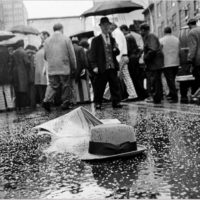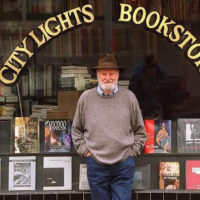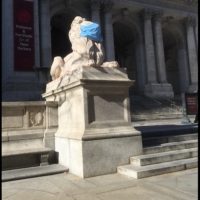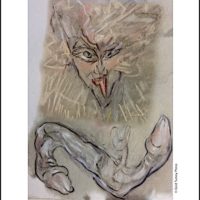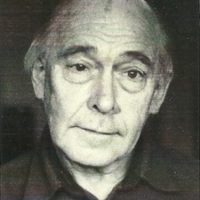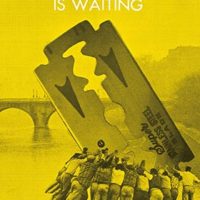When a book begins like this, notice must be taken: “I woke up, New Year’s Day 1970, in a straitjacket. I had no memory, of anything, at least not at first. I was in an asylum on Long Island after taking an overdose of some pills a shrink gave me. Slowly awareness arose. … I asked to have the jacket removed and they did. Bit by bit memories came back. I could recall details of my childhood. I remembered I’d married Cathy, my girlfriend, months ago when she turned eighteen … In a few days I felt normal.”
From Bike Messenger to Filmmaker
Oprah Interview Misses the Bigger Picture
In all the press coverage I have seen of Oprah Winfrey’s interview with Meghan and Harry, it has been treated as a tale of personal tragedy, a terrible racist family squabble, for the British royals — but not one mention of the larger tragedy at the heart of Heathcote Williams’s “Royal Babylon,” namely the immense damage caused by the monarchy’s greedy, rapacious treatment of peoples and nations the worldover.
The Long Haul: New York City Grins and Bears It
“Vaccine acceleration and partial re-openings inspire hope, but coming back from the pandemic will be a complex process.” — Michael Oreskes
Will Oprah Pick Up Where He Left Off?
Heathcote Williams on the British Monarchy
“‘God save the queen,’ they sang, ‘it’s a fascist regime.’ / And the song’s hook-line became a new anthem — / Disturbing to clutches of flag-wavers lining the streets. / And horrifying to Middle England and the Daily Mail.” — from ROYAL BABYLON
PS: In all the press coverage I have seen of the interview, it has been treated as a tale of personal tragedy, a terrible racist family squabble, for the British royals but not one mention of the larger tragedy at the heart of “Royal Babylon,” namely the immense damage caused by the monarchy’s greedy, rapacious treatment of peoples and nations the world over.
Joseph Brodsky on the Life of Books
“On the whole, books are less finite than ourselves. Even the worst among them outlast their authors. … Often they sit on the shelves absorbing dust long after the writer himself has turned into a handful of dust. Yet even this form of the future is better than the memory of a few surviving relatives or friends on whom one cannot rely, and often it is precisely the appetite for this posthumous dimension which sets one’s pen in motion.”
Lawrence Ferlinghetti Dies at 101
His Pictures of a Gone World Remain
A literary era passes. It was already past, yet it still has influence. Maybe the biggest. Because ArtsJournal was down yesterday—I know not why—I couldn’t post this. The world didn’t miss it. My account is minimal in the scheme of things but here ‘tiz anyhow, excerpted from ‘My Adventures in Fugitive Litrichur.’
Gary Lee-Nova: ‘Oblique Trajectories’
A survey exhibition of the artist’s work over more than four decades.
The exhibition at the Burnaby Art Gallery in Burnaby, B.C., Canada, will run until April 18, 2021.
The Library Is Closed
…and thoughts come in verse: ‘The stone lion at the gate / wears a mask like mine. / This is where I used to wait / for books that bind / that kept my mind at ease— / I crack them as I please. / Now I hurry home . . .’
‘Four-mile walk / double masked / fogged-up glasses / gloves and hat— / I’m a walking mummy / in deserted streets.’
The Sleep of Dreams
A contemporary artist visualizes an idea by the 17th-century ‘father of modern philosophy.’
City of Science
Truth and Lies: Covering COVID-18
How do journalists cover a crucial and complex topic like COVID-19 in this era of polarization and soundbites? Besides the challenge of quickly translating life-and-death medical and technical information to a broad audience, how do they guard against misinformation, lies, and the politicization of science? How can they dig through the many layers to bring lifesaving facts to the public?
Riding the Zoom Wagon
‘Journalism in a Time of Crisis’
The New York Review of Books will present a discussion about the ways contemporary journalism has addressed moments of political and social crisis. The program, Journalism in a Time of Crisis, is scheduled for Feb. 24 at 7:30 p.m., featuring Justine van der Leun, Howard French, Elizabeth Bruenig, Mark Danner, and Darryl Pinckney.
Because I Like to Laugh
A husband returns to the cabin after several hours of fishing and decides to take a nap. Since it is a beautiful day, his wife takes the boat out on the lake. She motors out a short distance, anchors, and reads her book. Along comes a Game Warden in his boat. Read what happens next.
Poetry Comes in Different Ways from Different Sources
David Erdos, a British poet most prolific, shows us one of them.
emmett williams: ‘universal truths’
from ‘selected shorter poems 1950-1970’ ‘universal truths / shouldn’t be / all that hard / to find . . .’
Moloko Print
Two New Books of Poems in Bilingual Editions
One by yours truly, “Your Obituary Is Waiting.” It’s a collection of “deformed sonnets,” with German translations by Gregor Pott and “flypaper collages” by Norman Ogue Mustill as counterpoint. The book design by Robert Schalinski, the paper, and the print quality are to die for, no pun. The other is “The Return” by William Cody Maher, also bilingual, with German translations by Walter Hartmann and photos by Signe Mähler, designed by Ralph Gabriel. And again the quality of the production is stunning. Furthermore, in a joint production, Moloko and Sea Urchin Editions have released “The Ex-Terr Poems” by Ed Sanders with his drawings, in an English-only edition, designed by Anneke Auer. I haven’t seen the book itself but I would bet the quality of the artifact matches the others.
Let’s Talk About Literary Exposure
Some would call it visibility. If you’re talking books, how about millions upon millions of Youtube views for a reading from Supervert’s ‘Necrophilia Variations.’ A dozen years ago when that video had two million views, I called it “viral reading.” Three years later, on Dec. 30, 2015, the video had 18.6 million views. Today it has some 28 million views. So what has this meant for selling the book?
Jim Haynes, RIP
Brad Spurgeon memorializes him: “End of an Era, but not of a Philosophy of Life.” I never met Jim. But he was extraordinarily welcoming when we corresponded by email about the strange case of Orwell’s typewriter.

